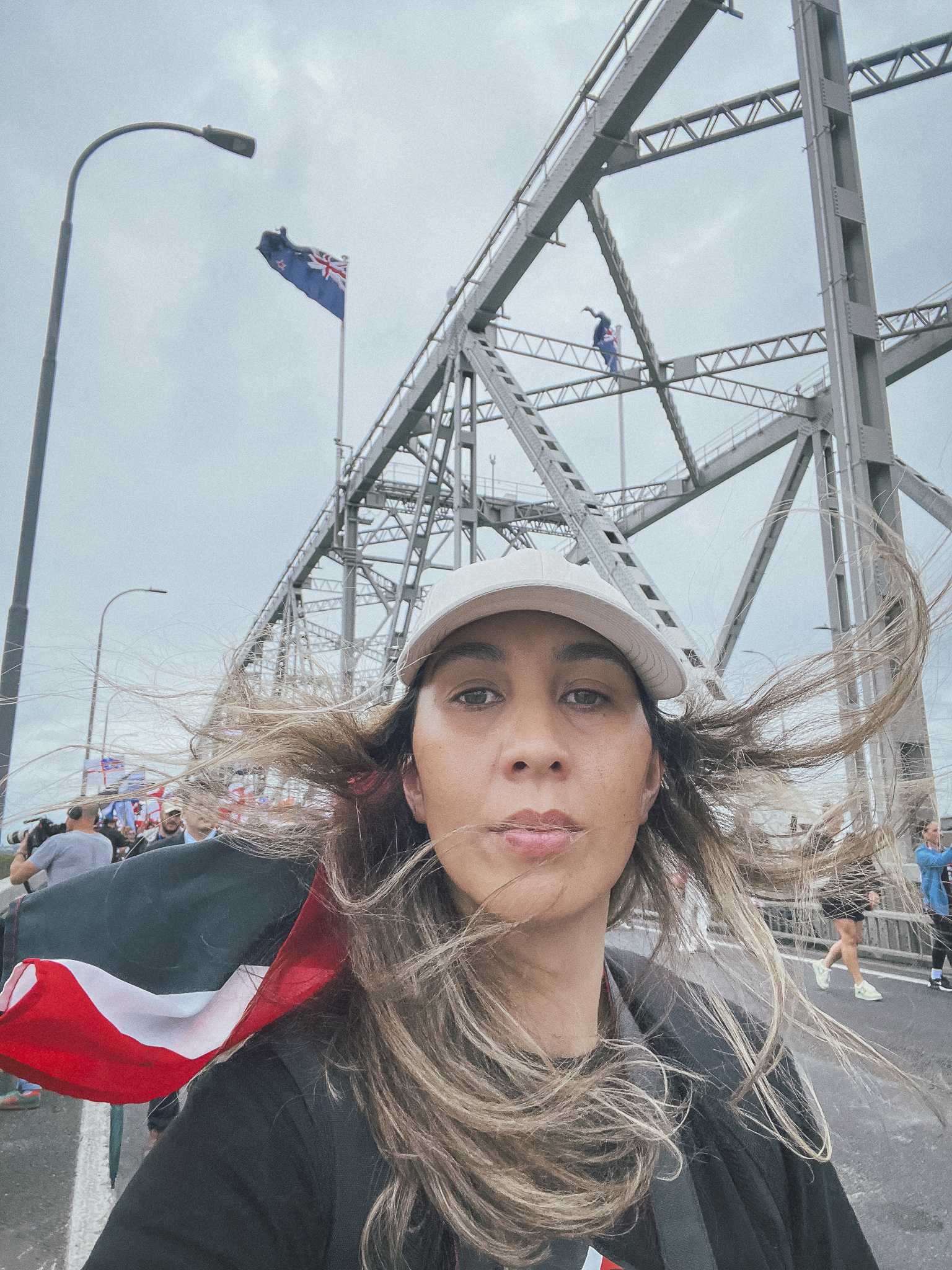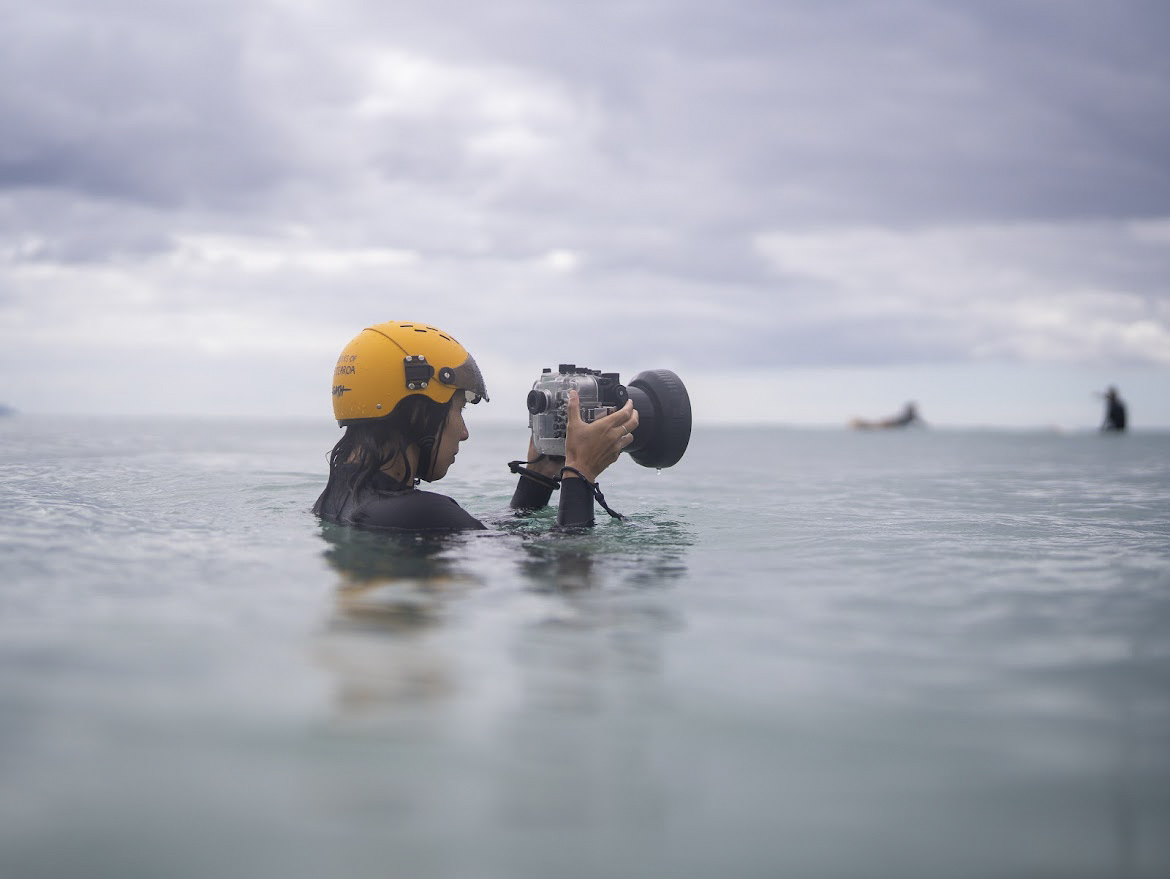Surfer and surf photographer Morgan Tahapehi is renowned for her body of work: Surfers of Aotearoa. Morgan has whakapapa to Tainui, but the reason she decided to hīkoi was to document the voices of New Zealand using her gift as a photographer. This is her story.
Ko Tainui tōku waka
Ko Raukawa, Ko Ngāti Māhanga ōku iwi
Ko Morgan Tahapehi tōku ingoa
Ko Surfers of Aotearoa āhau

Growing up, I didn’t go to kōhanga, speak te reo or understand Māori history. But my parents did teach us our whakapapa. My dad would say never forget who you are and where you come from. That has always kept me grounded and as I get older, I feel the pull to learn more about te ao Māori.

As a surfer, I feel the ocean run through my veins. Māori are not only tangata whenua (people of the land), but we are also tangata moana (people of the sea). To me, land and sea is more than dirt and salt water. It’s our home, food source, identity, and gods. Our connection with the land and sea is as much physical as it is
spiritual, it is the foundation of who we are as a people and the heart of our culture.
Why did I hīkoi?
I wanted to document the power of kōtahitanga. As a photographer, I felt it was my duty to capture the mana and aroha of the people in the hīkoi. By chance, I shared my Uber with a renowned photographer, Jos Wheeler and he invited me to join him at the front of the hīkoi. I was nervous but he said this is history and you are a part of it. Jos reminded me that this is bigger than us, our ancestors laid the pathway for us to walk towards building a united and better nation for our mokopuna.
In a world driven by social media, I aimed to help spread the kaupapa and wairua of this movement to as many people as possible.
What was my experience?
When the hīkoi started I was overwhelmed with pride for our people and I was sad that we had to fight this bill in the first place. Before tears could drip down my face, I pulled up the camera and got to work. Through the lens I witnessed the beauty of Māori and Tauiwi (non-Māori) walking together side-by-side. I saw whānau pulling a pūkana, school kids doing haka, tāne waving giant flags, wāhine raising hand-painted signs and elders whaling cries for Te Tiriti.
The bridge was swaying in sync with our march over the harbour and below us were waka cheering in solidarity.
As I came to the end of the hīkoi, I looked back and it was a sea of red, white and black. Thirty-five thousand people were crossing the bridge behind me; it was truly empowering.
What is my hope?
I hope the hīkoi has opened the eyes and minds of everyone in Aotearoa to understand Māori are the kaitiaki for the land, sea and all its people. I hope the nation can feel the mana of Te Tiriti and know that it protects us all. I hope the government give Māori the respect they deserve and kill the bill.

